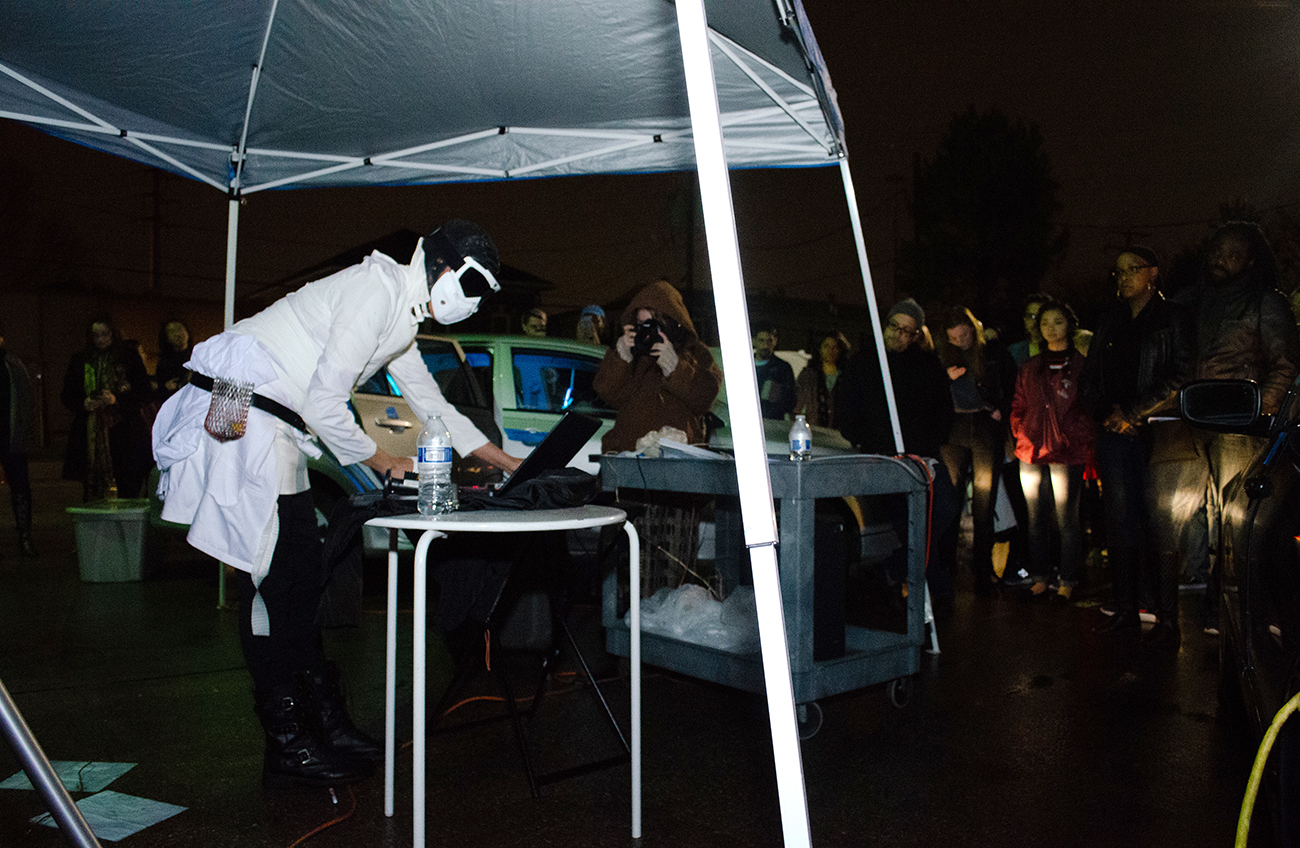A Collective Intervention: Creating Space for Memory Work at the Wall for Refugees
"All wars are fought twice, the first time on the battlefield, the second time in memory." -Viet Thanh Nguyen
One of the most visible and public ways that the US has remembered its involvement in the Vietnam War is through the somber, black, wall erected on the Washington Mall in our nation's capital. The names of US veterans who died during the conflict are engraved into the Wall, while reflecting back the faces of visitors in its polished black marble. The Wall has been hailed as a profound site of healing for those that visit, often leaving items there dedicated to fallen loved ones or to let go of traumatic experiences.
There are no Vietnamese names on the Wall. Framed in the nationalist context of the Washington Mall, this memorial conveniently "forgets" the Vietnamese (both civilians and veterans alike) and "remembers" American veterans as the primary victims of war. Yen Le Espiritu writes that "without creating an opening for a Vietnamese perspective of the war, these dramatic and public commemorations of the Vietnam War refuse to remember Vietnam as a historical site, Vietnamese people as genuine subjects, and the Vietnam War as having any kind of integrity of its own."
This project calls for a collective intervention at the Wall by Vietnamese, Cambodians, Laotians, and other refugee community members still affected today by the legacy of American militarism and imperialism in Southeast Asia, allowing the community to reclaim their past experiences, history, and memories, on our own terms. This project envisions a nationwide, coordinated, mass dedication of items at the Wall by refugee community members on the upcoming April 30 anniversary in 2020 (45 years after US military withdrawal from Vietnam). However, this proposal asks for seed money for smaller-scale dedications organized by members of the progressive Vietnamese American organization VietUnity, to take place on April 30, 2019 (The first one took place on April 30, 2018). Items would be created, found, collected, by VietUnity members and their local networks throughout the year, then placed at the Wall on April 30, 2019 by several VietUnity representatives.
Since its opening in 1982, national park rangers have collected all items left at the Wall, which are catalogued and stored in a national archive. During a visit to the archive in 2015, with the help of archive staff, I found that only six items had been left by members of the refugee community, out of thousands. There has been both an explicit (the names of your dead are not here) and implicit (this space is not for you, don't leave your items here) exclusion of refugee voices from this national memorial.
The coordinated, mass dedication of items from the refugee community at the Wall on April 30, 2020 would act as a physical and symbolic disruption of the US nation state's memory project that justifies US militarism and imperialism in Southeast Asia and other parts of the world through the "forgetting" of its victims, both in the past and present. This intervention centers refugee experiences in ways that refugee community members will determine for themselves, as a collectively curated archive of objects and memories, rather than one designed by state institutions or policy-makers. The open nature of the collective archive insists that the refugee community is not a monolith; that there are complex disjunctures, contradictions, and intersections in our identities and in the ways that we remember the conflict and its continuing legacies felt in our everyday lives today. This project carves out space for a public, nationally recognized memorial formed from the collective engagement of diverse voices in the refugee community rather than one determined by the policies of any single institution.
-Kim Tran
Thank you VietUnity members for allowing me to collaborate with ya’ll on this project.









































































































































































































